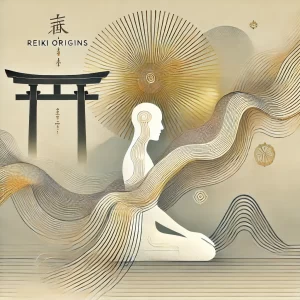The Origins of Reiki: A Journey Through Healing and Spiritual Enlightenment
Reiki, a holistic healing practice centered on channeling universal energy, has become a cornerstone in alternative therapies worldwide. But to truly appreciate Reiki’s profound impact, it’s essential to delve into its origins, steeped in spirituality, discipline, and a commitment to well-being.
The Birth of Reiki: Dr. Mikao Usui’s Quest
Reiki, as it is widely practiced today, was developed by Dr. Mikao Usui, a Japanese scholar and spiritual seeker in the early 20th century. Usui’s journey began with a profound question: Could there be a universal method of healing accessible to anyone? Inspired by Buddhist teachings and ancient texts, Usui set out on a path of intense spiritual exploration.
In 1922, after a 21-day retreat of fasting and meditating on Mount Kurama in Japan, Dr. Usui experienced what he described as a revelation. He gained the ability to harness and channel universal life energy, which he named Reiki—a combination of the Japanese words “rei” (universal) and “ki” (life force energy).
The Philosophical Roots of Reiki
Reiki’s foundation draws from a blend of ancient philosophies and practices:
- Taoism and Qi Energy: Reiki aligns with the Taoist concept of “Qi” or “Chi,” the vital life force energy flowing through all living beings.
- Buddhism and Compassion: Usui’s Buddhist influences shaped Reiki’s core principles, emphasizing mindfulness, compassion, and the alleviation of suffering.
- Shinto Practices: Japan’s indigenous Shinto traditions, with their focus on nature and spiritual connection, also inspired Reiki’s reverence for the natural world and universal energy.
The Five Reiki Principles
Dr. Usui established five guiding principles to promote mental clarity and spiritual well-being:
- Just for today, do not worry.
- Just for today, do not anger.
- Honor your parents, teachers, and elders.
- Earn your living honestly.
- Show gratitude to every living thing.
These principles serve as a moral compass for practitioners and emphasize living a balanced, peaceful life.
Reiki’s Spread to the West
After Dr. Usui’s passing, his teachings were carried forward by dedicated students, including Chujiro Hayashi, a retired naval officer. Hayashi further refined Reiki techniques and established training clinics in Japan. One of Hayashi’s students, Hawayo Takata, a Hawaiian-born Japanese-American, played a pivotal role in bringing Reiki to the West during the 1930s.
Takata modified some of Reiki’s teachings to resonate with Western audiences, ensuring its accessibility. Through her efforts, Reiki gained widespread recognition as a legitimate healing practice in Europe and North America.
Reiki in Modern Practice
Today, Reiki has evolved into a globally practiced modality. From hospitals and wellness centers to private practice, Reiki is used to address physical, emotional, and spiritual challenges. Practitioners channel Reiki energy through their hands, offering non-invasive treatment to balance the recipient’s energy field and promote natural healing.
Reiki’s inclusive nature—requiring no specific belief system—has contributed to its popularity. It complements traditional medical treatments and other holistic therapies, offering a gentle yet profound approach to healing.
The Legacy of Reiki
Reiki continues to evolve while remaining rooted in its original purpose: connecting with universal energy to bring harmony and healing. It’s a testament to Dr. Usui’s vision that this ancient art resonates deeply in today’s world, bridging cultural and spiritual divides.
Conclusion
Reiki’s origins remind us that healing is not just about addressing symptoms but nurturing the whole self—mind, body, and spirit. Its story is a timeless one of seeking truth, connecting with universal energy, and sharing that gift with the world. Whether as a practitioner or recipient, engaging with Reiki is a journey into the heart of energy, compassion, and holistic well-being.
